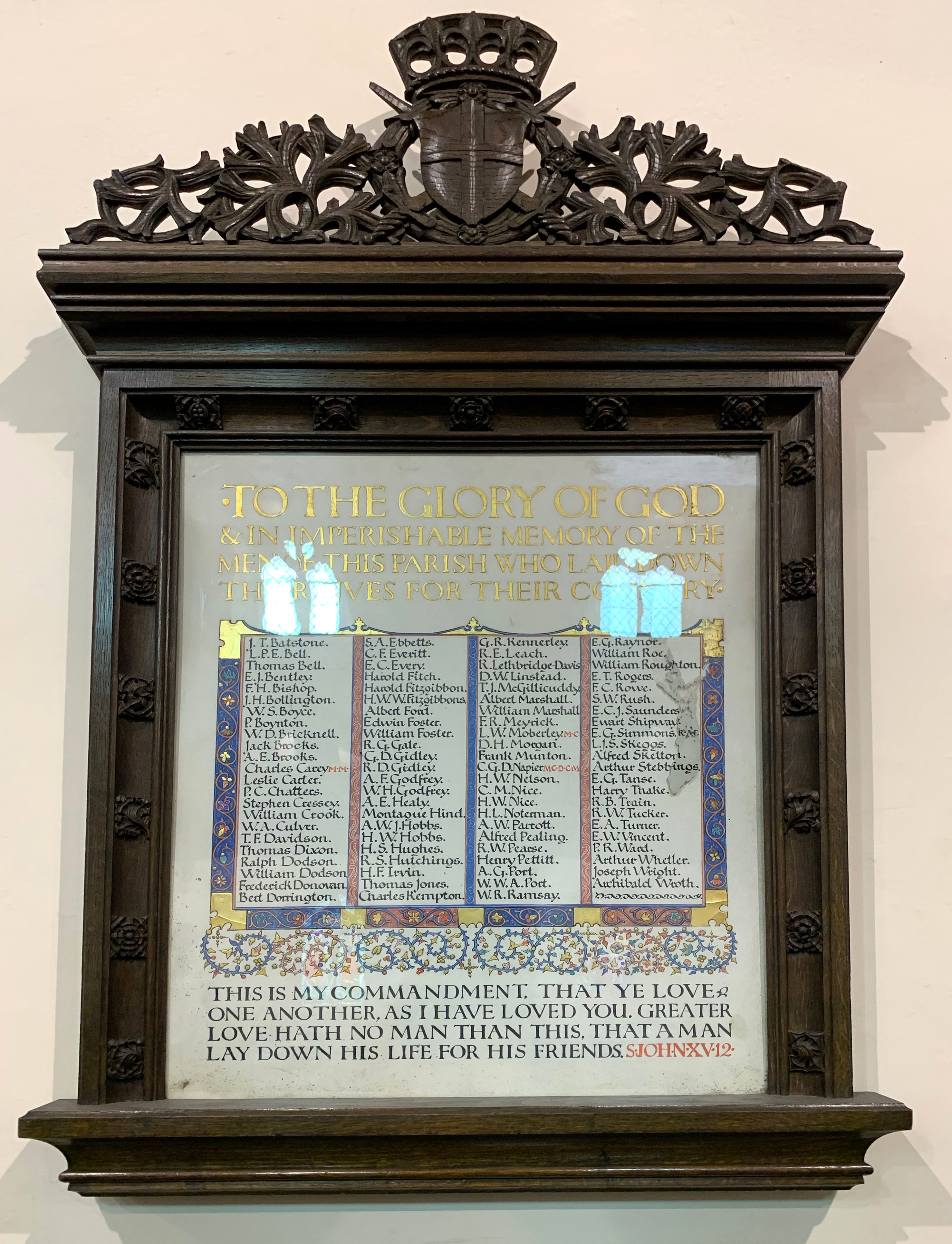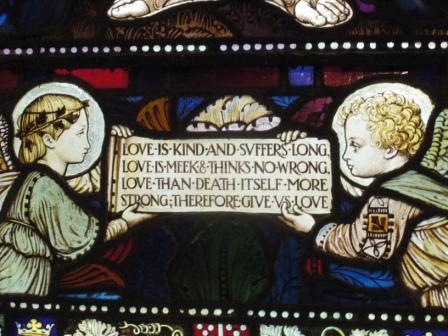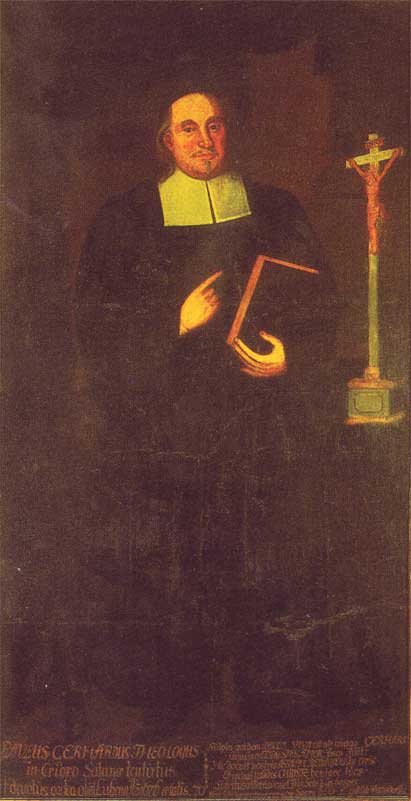|
William Cooke (priest, Born 1821)
William Cooke (1821 – 23 November 1894), widely known as Canon Cooke, was a Church of England clergyman, hymn-writer, and translator. As an author he sometimes signed his work A. C. C., which stood for "a canon of Chester".Theodore Brown Hewitt, ''Paul Gerhardt as a hymn writer and his influence on English hymnody'' (Yale University Press, 1918), p. 142 Early life Baptised on 17 March 1821, the fourth son of Thomas Cooke, Esquire, of Gorsefield, Eccles, Lancashire, Cooke was educated at Clapham by the Rev. Dr N. Laing and was admitted to Trinity Hall, Cambridge, on 10 October 1836. He actually matriculated in the Michaelmas term of 1839, was elected a Scholar in 1840, and graduated BA in 1843, proceeding to MA in 1848. In 1844 he was ordained a deacon of the Church of England. Career Cooke served as curate of Hillingdon, Middlesex, from 1844 to 1846, and in 1845 was ordained a priest. His next appointment was as curate of Brantham, Suffolk, from 1846 to 1848, and then for tw ... [...More Info...] [...Related Items...] OR: [Wikipedia] [Google] [Baidu] |
Church Of England
The Church of England (C of E) is the State religion#State churches, established List of Christian denominations, Christian church in England and the Crown Dependencies. It is the mother church of the Anglicanism, Anglican Christian tradition, tradition, with foundational doctrines being contained in the ''Thirty-nine Articles'' and ''The Books of Homilies''. The Church traces its history to the Christian hierarchy recorded as existing in the Roman Britain, Roman province of Britain by the 3rd century and to the 6th-century Gregorian mission to Kingdom of Kent, Kent led by Augustine of Canterbury. Its members are called ''Anglicans''. In 1534, the Church of England renounced the authority of the Papacy under the direction of Henry VIII, beginning the English Reformation. The guiding theologian that shaped Anglican doctrine was the Reformer Thomas Cranmer, who developed the Church of England's liturgical text, the ''Book of Common Prayer''. Papal authority was Second Statute of ... [...More Info...] [...Related Items...] OR: [Wikipedia] [Google] [Baidu] |
St Stephen's Church, Shepherd's Bush
The Church of St Stephen and St Thomas is a Church of England parish church in Shepherd's Bush, London. It was built circa 1849–50, designed by architect Anthony Salvin in the Gothic Revival style and is now Grade II listed. The church is located on the South side of Uxbridge Road on the corner of Coverdale Road, to the west of Shepherd's Bush tube station. In the 1950s St Stephen's welcomed many members of the so-called "Windrush Generation" from the West Indies, and in 1962 the Barbadian-born Reverend Wilfred Wood became curate to St Stephen's, later becoming the Church of England's first black bishop. In 1966 the vicar John Asbridge, frustrated by the chronic shortage of local housing, set up the Shepherds Bush Housing Association. Today St Stephen's ministers to a diverse congregation, and serves a hot meal to up to 100 homeless people every Monday. The church is on Historic England's ''Heritage at Risk Register'' and an appeal has been launched to raise funds to repair ... [...More Info...] [...Related Items...] OR: [Wikipedia] [Google] [Baidu] |
Henry Bradshaw Society
The Henry Bradshaw Society is a British-based text publication society founded in 1890 for the scholarly editing and publication of rare liturgical texts. Foundation An initial meeting to plan the Henry Bradshaw Society took place in London on 3 July 1890, after which provisional subscriptions were solicited. The general meeting to inaugurate the Society took place on 25 November 1890 in the Jerusalem Chamber at Westminster Abbey. A committee was finalised and a programme of publications worked out. One of the models for the society was the Durham-based Surtees Society, formed in 1834, which in turn received assistance from officers of the Bannatyne Club. The foundation of the new society was also linked, more by overlapping interests than organizational models, to the body then known as the St Paul's Ecclesiological Society. John Wickham Legg, who had played a significant role in the re-establishment of that society in 1879 after a decade or so of limbo, also became an impor ... [...More Info...] [...Related Items...] OR: [Wikipedia] [Google] [Baidu] |
Bishop Of Lincoln
The Bishop of Lincoln is the Ordinary (officer), ordinary (diocesan bishop) of the Church of England Diocese of Lincoln in the Province of Canterbury. The present diocese covers the county of Lincolnshire and the unitary authority areas of North Lincolnshire and North East Lincolnshire. The bishop's seat (''cathedra'') is located in the Lincoln Cathedral, Cathedral Church of the Blessed Virgin Mary in the city of Lincoln, England, Lincoln. The cathedral was originally a minster (church), minster church founded around 653 and refounded as a cathedral in 1072. Until the 1530s the bishops were in full communion with the Roman Catholic Church. The medieval Lincoln Medieval Bishop's Palace, Bishop's Palace lies immediately to the south of the cathedral in Palace Yard; managed by English Heritage, it is open to visitors. A later residence (first used by Edward King (Bishop of Lincoln), Bishop Edward King in 1885) on the same site was converted from office accommodation to reopen in 20 ... [...More Info...] [...Related Items...] OR: [Wikipedia] [Google] [Baidu] |
Christopher Wordsworth
Christopher Wordsworth (30 October 180720 March 1885) was an English intellectual and a bishop of the Church of England. Life Wordsworth was born in London, the youngest son of Christopher Wordsworth (divine), Christopher Wordsworth, Master of Trinity, who was the youngest brother of the poet William Wordsworth. Thus, Wordsworth was a nephew of the celebrated poet. Wordsworth was the younger brother of the classical scholar John Wordsworth (scholar), John Wordsworth and Charles Wordsworth, Bishop of Saint Andrews, Dunkeld and Dunblane. He was educated at Winchester College, Winchester and Trinity College, Cambridge, Trinity, Cambridge. Like his brother Charles, he was distinguished as an athlete as well as for scholarship. He won the Chancellor's Gold Medal for poetry in 1827 and 1828. He became senior classic, and was elected a fellow and tutor of Trinity in 1830; shortly afterwards he took holy orders. He went for a tour in Greece in 1832–1833, and published various wor ... [...More Info...] [...Related Items...] OR: [Wikipedia] [Google] [Baidu] |
Liturgy
Liturgy is the customary public ritual of worship performed by a religious group. As a religious phenomenon, liturgy represents a communal response to and participation in the sacred through activities reflecting praise, thanksgiving, remembrance, supplication, or repentance. It forms a basis for establishing a relationship with God. Technically speaking, liturgy forms a subset of ritual. The word ''liturgy'', sometimes equated in English as " service", refers to a formal ritual enacted by those who understand themselves to be participating in an action with the divine. Etymology The word ''liturgy'' (), derived from the technical term in ancient Greek (), ''leitourgia'', which means "work or service for the people" is a literal translation of the two affixes λήϊτος, "leitos", derived from the Attic form of λαός ("people, public"), and ἔργον, "ergon", meaning "work, service". In origin, it signified the often expensive offerings wealthy Greeks made in serv ... [...More Info...] [...Related Items...] OR: [Wikipedia] [Google] [Baidu] |
Patristics
Patristics, also known as Patrology, is a branch of theological studies focused on the writings and teachings of the Church Fathers, between the 1st to 8th centuries CE. Scholars analyze texts from both orthodox and heretical authors. Patristics emerged as a distinct discipline in the 19th century, supported by critical editions like Patrologia Latina and Patrologia Graeca. The field employs textual analysis, archaeology, and historical criticism to analyze early Christianity's doctrinal, cultural, and intellectual development, incorporating traditions beyond Greek and Latin, such as Syriac, Coptic, Armenian, and Ethiopian. Etymology Patrology, derived from the Latin (father) and Greek ''logos'' (discourse), primarily refers to the study of the Church Fathers and serves as an introduction to early Christian writings. Historically, it also included large compilations of these writings, such as '' Patrologia Latina'' and '' Patrologia Graeca'' by Migne.Stausberg, M., & Vevaina, ... [...More Info...] [...Related Items...] OR: [Wikipedia] [Google] [Baidu] |
Selwyn College, Cambridge
Selwyn College, Cambridge is a Colleges of the University of Cambridge, constituent college of the University of Cambridge. The college was founded in 1882 by the Selwyn Memorial Committee in memory of George Selwyn (bishop of Lichfield), George Augustus Selwyn (1809–1878), the first Bishop of New Zealand (1841–1868), and subsequently Bishop of Lichfield (1868–1878). Its main buildings consist of three courts built of stone and brick (Old Court, Ann's Court, and Cripps Court). There are several secondary buildings, including adjacent townhouses and lodges serving as student hostels on Grange Road, Cambridge, Grange Road, West Road, Cambridge, West Road and Sidgwick Avenue. The college has some 60 fellows and 110 non-academic staff. In 2024, Selwyn was ranked fifth on the Tompkins Table of Cambridge colleges in order of undergraduates' performances in examinations. The college was ranked 16th out of 30 in an assessment of college wealth conducted by the student newspaper '' ... [...More Info...] [...Related Items...] OR: [Wikipedia] [Google] [Baidu] |
Paul Gerhardt
wikisource:The New International Encyclopædia/Gerhardt, Paulus, Paulus or Paul Gerhardt (12 March 1607 – 27 May 1676) was a German theologian, Lutheranism, Lutheran minister and hymnodist. Biography Gerhardt was born into a middle-class family at Gräfenhainichen, a small town between Halle, Saxony-Anhalt, Halle and Wittenberg. His father died in 1619, his mother in 1621. At the age of fifteen, he entered the Fürstenschule Grimma, Fürstenschule in Grimma. The school was known for its pious atmosphere and stern discipline. The school almost closed in 1626 when the plague came to Grimma, but Paul remained and graduated from there in 1627. In January 1628 he enrolled in the University of Wittenberg. There, two teachers in particular had an influence on him: Paul Röber and Jacob Martini. Both of these men were staunch Lutherans, promoting its teachings not only in the classroom but in sermons and hymns. Röber in particular often took his sermon texts from hymns. In this way G ... [...More Info...] [...Related Items...] OR: [Wikipedia] [Google] [Baidu] |
Philipp Nicolai
Philipp Nicolai (10 August 1556 – 26 October 1608) was a German Lutheran pastor, poet, and composer. He is most widely recognized as a hymnodist. Life Philipp Nicolai was born at Mengeringhausen in Waldeck, where his father was a Lutheran pastor. His early education include studies at Kassel, Hildesheim and Dortmund. He studied theology at the University of Erfurt where he was a pupil of Ludwig Helmbold. In 1583, he was ordained to the Lutheran ministry and was appointed minister at Herdecke. He was subsequently expelled during the Counter-Reformation. In 1588, he became pastor at Altwildungen in Hesse. He graduated with a Doctorate Degree in Theology from the University of Wittenberg in 1594. In 1596, he became the minister at Unna in Westphalia. In 1601, he was elected chief pastor of St. Catherine's Church (''Katharinenkirche'') in Hamburg. Nicolai died in Hamburg on 26 October 1608, at age 52. Work He was the author of two famous hymns: " Wachet auf, ruf ... [...More Info...] [...Related Items...] OR: [Wikipedia] [Google] [Baidu] |
Wachet Auf, Ruft Uns Die Stimme
"" (literally: Awake, the voice is calling us) is a Lutheran hymn written in German by Philipp Nicolai, first published in 1599 together with "". It appears in German hymnals and in several English hymnals in translations such as "Wake, Awake, for Night Is Flying" ( Catherine Winkworth, 1858), "Wake, O wake! with tidings thrilling" ( Francis Crawford Burkitt, 1906), and "Up! Awake! From Highest Steeple" ( George Ratcliffe Woodward, 1908). Johann Sebastian Bach based a chorale cantata on the hymn, , one of its many musical settings. Nicolai Philipp Nicolai wrote the hymn in 1598, a time when the plague had hit Unna where he lived for six months as a preacher after studies in theology at the University of Wittenberg. The text is based on the Parable of the Ten Virgins (). Nicolai refers to other biblical ideas, such as from Revelation the mentioning of marriage () and the twelve gates, every one of pearl (), and from the First Epistle to the Corinthians the phrase "eye hath n ... [...More Info...] [...Related Items...] OR: [Wikipedia] [Google] [Baidu] |
Chester Cathedral Int Hamilton 005
Chester is a cathedral city in Cheshire, England, on the River Dee, close to the England–Wales border. With a built-up area population of 92,760 in 2021, it is the most populous settlement in the borough of Cheshire West and Chester. It is also the historic county town of Cheshire and the second-largest settlement in Cheshire after Warrington. Chester was founded in 79 AD as a "castrum" or Roman fort with the name Deva Victrix during the reign of Emperor Vespasian. One of the main army camps in Roman Britain, Deva later became a major civilian settlement. In 689, King Æthelred of Mercia founded the Minster Church of West Mercia, which later became Chester's first cathedral, and the Angles extended and strengthened the walls to protect the city against the Danes. Chester was one of the last cities in England to fall to the Normans, and William the Conqueror ordered the construction of a castle to dominate the town and the nearby Welsh border. Chester was granted city stat ... [...More Info...] [...Related Items...] OR: [Wikipedia] [Google] [Baidu] |









